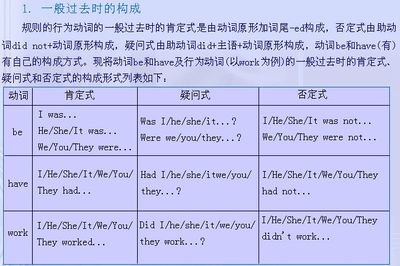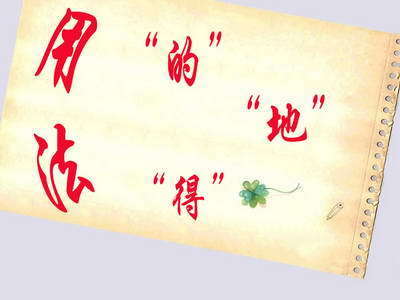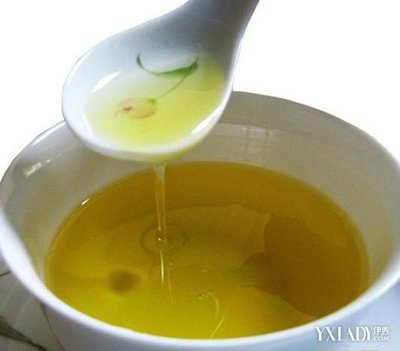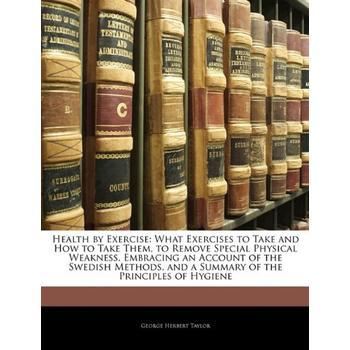一、一般过去时的用法:
1.表示过去的动作或状态,常和明确的过去时间状语连用,如:yesterday, last week, three days ago, in1998,just now等,或与由when引导的从句连用。
2.也可以表示过去某一段时间内经常或反复出现的动作。句子中常带有every day, often, usually, always,sometimes等时间状语。
例:When I worked in the company, I got up early everymorning.
在那家公司上班时,我每天早晨都起得很早。
In thepast few years she usually went touring during her summerholidays.
在过去的几年里,每逢暑假她总是出去旅游。
二、一般过去时的形式
tobe:
第一人称单数和第三人称单数用was,其余的人称用were。
todo(行为动词):
行为动词的过去式有两类,一类是规则动词,另一类是不规则动词。tohave:各人称,单、复数一律用had。
肯定句 | 否定句 | |
be | I/He/She/It was... | I/ He/She/It was not ... |
We/You/They were... | We/You/They were not... | |
have | I/He/She/It/ We/You/They had... | I/ He/She/It/We/You/They had not(有)... |
I/He/She/It/We/You/They did not have (吃/喝/进行...)… | ||
行为动词 | I/He/She/It/ We/You/They studied… | I/ He/She/It/ We /You/They did not study… |
一般疑问句 | 简略回答 | |
be | Washe/she/it...? | Yes,hewas.(No,he wasn’t.) |
Werewe/you/they...? | Yes,youwere. (No,you were not) | |
have | HadI/he/she/it/you/we/they...?DidI/you/he... have... | Yes,youhad.(No,you hadn’t.) Yes,youdid.(No,you didn’t.) |
行为动词 | Didhe/she/ it/ we/you/ they study..? | Yes,youdid.(No,you didn’t.) |
I.一般过去时的概念
一般过去时表示过去某个时间发生的动作或存在的状态。常和表示过去的时间状语连用。如:last year, yesterday等;也可表示过去经常反复发生的动作,常和often,
always等频率副词连用。
例如:
①Isaw him in the streetyesterday.昨天我在街上看见他了。
②LiMei always went to school on foot lastyear.去年李梅总是步行上学。
II.一般过去时的几种句型
肯定句结构为:主语+动词的过去式+其它。如:He went to the toy store
yesterday.他昨天去玩具店了。
否定句结构为:主语+did not (didn't)+动词原形+其它。如:He didn't go to the toy storeyesterday.他昨天没去玩具店。
一般过去时的一般疑问句的构成:
Did+主语+动词原形+其它?如:
1) -Didyou go to Beijing last week?
-Yes, wedid. (No, we didn't.)
2) -Didyou meet the businessman before?
-No, Ididn't. (Yes, I did.)
一般过去时的特殊疑问句的构成:
疑问词+did+主语+动词原形+其它?如:
1) -Whatdid you do last night?
-I did myhomework.
2) -Wheredid you go last week?
-I went toShanghai with my parents.
一般过去时口诀
一般过去时并不难,表示过去动作、状态记心间。
动词要用过去式,时间状语句末站。
否定句很简单,didn't站在动词原形前,其它部分不要变。
一般疑问句也好变,did放在句子前,主语、动词原形、其它部分依次站。
特殊疑问句也简单,疑问词加一般疑问句记心间。
最后一条请注意,动词过去式要牢记。
 爱华网
爱华网



